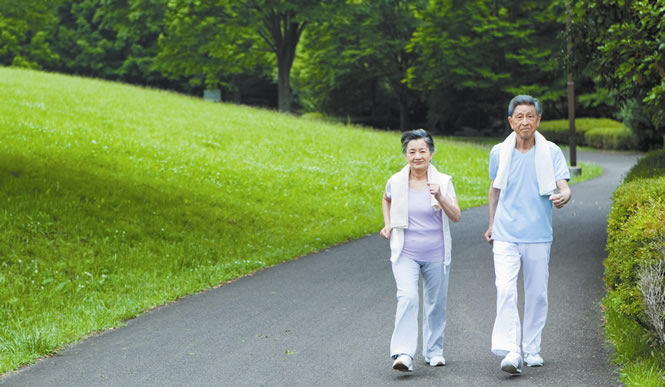31 January 2012
Our Bones and Muscles: Taking Care Against Falls

Falls and their consequences can be serious at any age, but much more so as we get older. In addition to injuries resulting from the fall, they can lead to a subsequent loss of confidence and an increased fear of falling, which in turn can cause incapacitation and institutionalisation. Unfortunately, falls are the most frequent cause of injury relating to death amongst the elderly.
Suffering from Broken Bones
We all know that one of the most common complications of falling is broken bones, which apart from the pain, limits a person's activities and may require urgent surgery. The reason for this increasing chance of fractures or broken bones is because our bones get weaker as we get older, due to osteoporosis, a common bone disease. Osteoporosis lowers bone mass and causes deterioration in the bone structure.
There is also increasing evidence that previous fractures, such as a wrist fracture may be predictive of a subsequent fracture such as a hip fracture. Bone mineral density is irrelevant in these cases. It is not uncommon to see patients, previously with a wrist or Colles' fracture, admitted to the orthopedic ward with a hip fracture. A possible explanation is that these patients defend themselves when they fall by using their outstretched hands to prevent a more severe injury, such as a head injury, out of instinct. As the individual gets older, these defence mechanisms weaken and responses slow down, so rather than falling onto outstretched hands, they fall down on their bottoms instead, resulting in a subsequent hip fracture.
Preventing Broken Bones
Today, it is not hard to find information relating to osteoporosis. However, another member of the musculoskeletal system, skeletal muscles, should not be overlooked in the prevention of falls. We have some 700 skeletal muscles which allow us to move, maintain our posture and control our reflexes. Sadly the loss of lower body strength among the elderly not only impairs locomotion, it also increases the risk of falling and thus of possible fractures. When falling, the muscle strength in our legs helps us to correct the momentary loss of balance and prevent a serious fall. Similarly strength in the muscles of the upper body reduces the severity of injuries by reducing the force of the fall or by providing some stabilisation during the fall. Making things worse, the loss of muscle bulk and fat weakens the natural cushioning enjoyed by younger people. All these factors contribute to the higher possibility of bone injuries.
Sarcopenia – The Decline of Muscle Strength
Skeletal muscles consist of the most abundant tissue in the human body, accounting for approximately 23 % of a woman's body weight and more than 40% in a man's. Muscle size and function vary dramatically across our life span We see rapid increases during our growth and development, achieving maximum muscle strength normally in our twenties, followed by a gradual decline from our thirties as we age. We also build up muscles with use, so muscles exercised regularly grow larger – this is called "muscle hypertrophy", while those that are unused decrease in size and strength, due to "muscle atrophy".
As we continue our journey through life, not only are we likely to suffer from more broken bones due to osteoporosis, but our skeletal muscle mass will also reduce, leading to a loss of strength, power and ultimately leading to function impairment and physical disability. This happens to us all, even the healthy. This natural decline in strength as we age is known as "sarcopenia".
Stay tuned for my next article which will take a closer look at Sarcopenia.
Dr Liu Kin-wah
Specialist in Geriatric Medicine
Wellness
